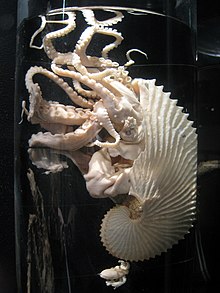
The list of marine molluscs of South Africa is a list of saltwater species that form a part of the molluscan fauna of South Africa. This list does not include the land or freshwater molluscs.
Contents
Mollusca is the second-largest phylum of invertebrate animals, after Arthropoda; members are known as molluscs or mollusks ( /ˈmɒləsk/ ). Around 76,000 extant species of molluscs are recognized. The number of fossil species is estimated between 60,000 and 100,000 additional species. The proportion of undescribed species is very high. Many taxa remain poorly studied.
Molluscs are the largest marine phylum, comprising about 23% of all the named marine organisms. Numerous molluscs also live in freshwater and terrestrial habitats. They are highly diverse, not just in size and anatomical structure, but also in behaviour and habitat. The phylum is typically divided into 7 or 8 taxonomic classes, of which two are entirely extinct. Cephalopod molluscs, such as squid, cuttlefish, and octopuses, are among the most neurologically advanced of all invertebrates—and either the giant squid or the colossal squid is the largest known extant invertebrate species. The gastropods (snails and slugs) are by far the most diverse molluscs and account for 80% of the total classified species. ( Full article... )








